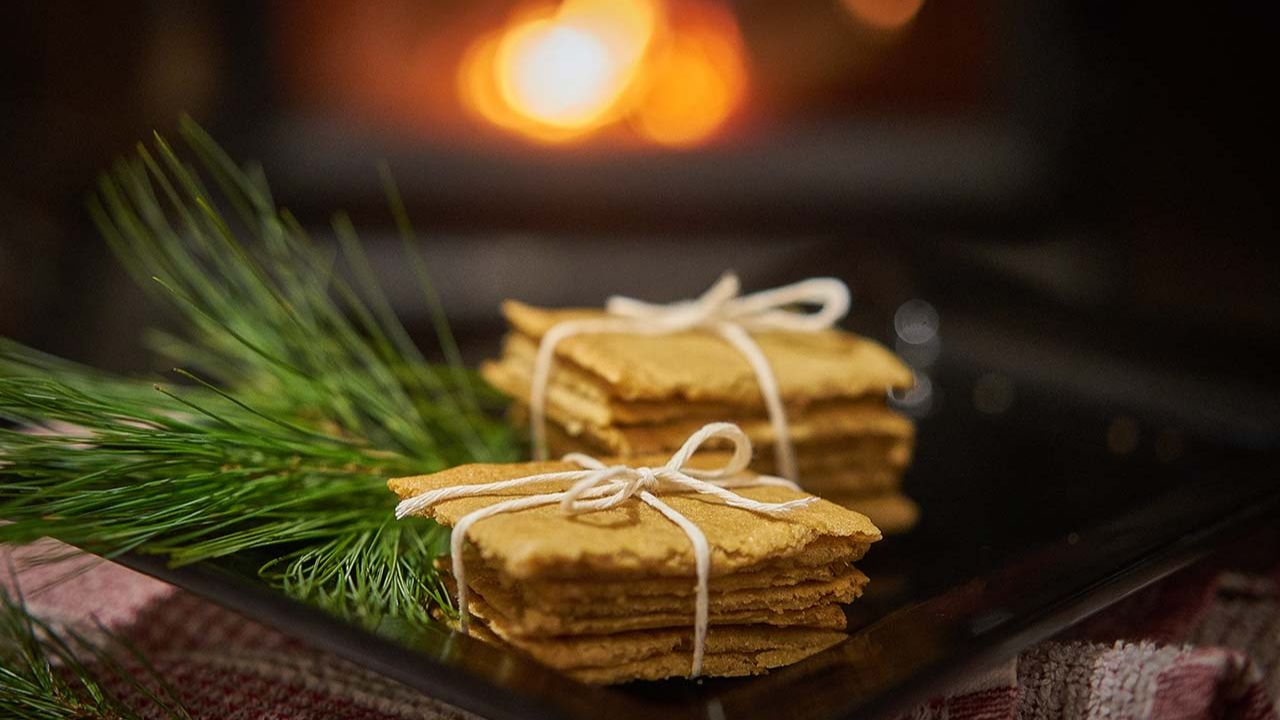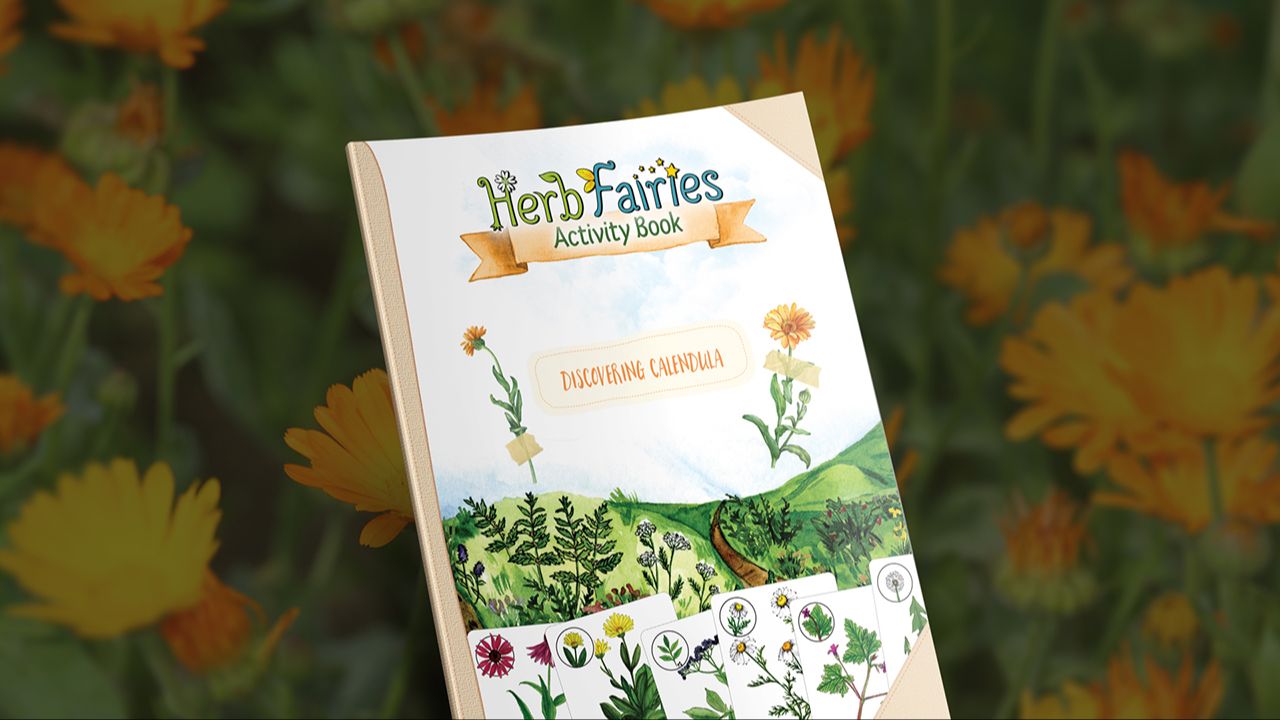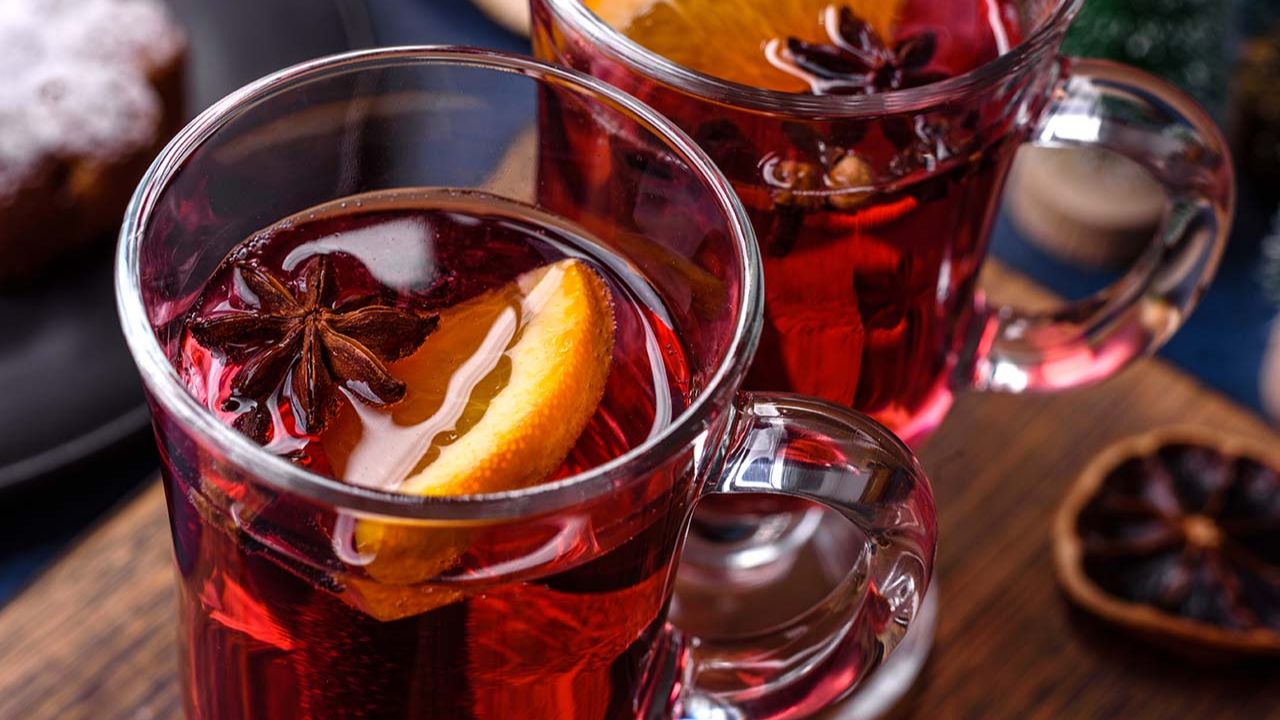Lavender’s delightful scent and beautiful bloom spikes have made it a favorite herb for centuries. Wild lavender grows throughout the Mediterranean and northeast Africa, while garden varieties are found all over the world. Lavender is cherished for its scent, being widely used in perfumes, beauty products, disinfectants, and household cleaners. Herbalists and aromatherapists rely on it for everything from relieving stress and promoting sleep to healing wounds and encouraging healthy digestion.
If you step in to any large plant nursery you’ll soon find there are a dizzying number different lavenders out there. Some have been bred for large flowers, while others are hardier for surviving harsher winters. In the aromatherapy world, the different lavenders are prized for their variations in chemical content. Just dipping your toe into the world of lavenders will show you how complex this common herb can be.
The best way to get to know lavender is to enjoy it often. When walking by lavender plants, rub your hands along the leaves, stems, and flowers, and then cup your hands to your nose and mouth and breath deeply. Pay special attention to the plants that are potently aromatic. If you do this over time, you’ll get a sense of the many nuances of lavender. Lavender, like most herbs, thrives with neglect. A coddled plant that is watered regularly won’t be nearly as strong as a plant striving to survive in harsher conditions.

Lavender Uses & Plant Profile Summary:
- Botanical Name: Lavandula angustifolia, other Lavandula spp. and cultivars
- Family: Lamiaceae (Mint)
- Parts Used: flower buds, aerial parts
- Energetics: warming
- Taste: pungent, bitter
- Plant Properties: aromatic, antimicrobial, analgesic, relaxing nervine, carminative, cholagogue
- Plant Uses: bacterial and fungal infections, tension, poor sleep, anxiety, pain, wounds, burns, depression, headaches, dyspepsia, bug bites, insect repellent
- Plant Preparations: tea, tincture, essential oil, culinary
#block-1701079728979 { margin-top: 0px; margin-right: 0px; margin-bottom: 0px; margin-left: 0px; } #block-1701079728979 .block { border: 4px black; border-radius: 4px; background-color: #fff; padding: 0px; padding: 0px; padding: 0px; padding-top: 20px; padding-right: 20px; padding-bottom: 20px; padding-left: 20px; } @media (min-width: 768px) { #block-1701079728979 { margin-top: 0px; margin-right: 0px; margin-bottom: 0px; margin-left: 0px; } #block-1701079728979 .block { padding: 0px; padding: 0px; padding-top: 30px; padding-right: 30px; padding-bottom: 30px; padding-left: 30px; } } @media (max-width: 767px) { #block-1701079728979 { text-align: left; } } #block-1701079728979 .accordion-title h5 { margin: 0; cursor: pointer; } #block-1701079728979 .accordion-body { padding-top: 24px; } #block-1701079728979 .accordion-title.collapsed:after { content: "\f067"; margin-left: 24px; } #block-1701079728979 .accordion-title:after { content: "\f068"; margin-left: 24px; color: ; } #block-1712104460965 { margin-top: 0px; margin-right: 0px; margin-bottom: 0px; margin-left: 0px; } #block-1712104460965 .block { border: 1px solid #ECF0F1; border-radius: 10px; background-color: #f8f8f8; padding: 0px; padding: 0px; padding: 0px; padding-top: 15px; padding-right: 15px; padding-bottom: 15px; padding-left: 15px; } @media (min-width: 768px) { #block-1712104460965 { margin-top: 0px; margin-right: 0px; margin-bottom: 0px; margin-left: 0px; } #block-1712104460965 .block { padding: 0px; padding: 0px; padding-top: 15px; padding-right: 15px; padding-bottom: 15px; padding-left: 15px; } } @media (max-width: 767px) { #block-1712104460965 { text-align: center; } } #block-1712104460965 .feature__image, [data-slick-id="1712104460965"] .feature__image { width: 100px; border-radius: 100px; } .authorfeature { display: flex; align-items: flex-start; position: relative; } .authorfeature__image-container { flex-shrink: 0; margin-right: 20px; } .authorfeature__image { max-width: 150px; height: auto; } .authorfeature__content { flex-grow: 1; } @media (max-width: 767px) { #block-1712104460965 .authorfeature { flex-direction: column; align-items: center; } #block-1712104460965 .authorfeature__image-container { margin-right: 0; } } #block-1713044221799 { margin-top: 0px; margin-right: 0px; margin-bottom: 0px; margin-left: 0px; } #block-1713044221799 .block { border: 1px solid #f0f0f0; border-radius: 9px; background-color: #f8f8f8; padding: 0px; padding: 0px; padding-top: 15px; padding-right: 5px; padding-bottom: 15px; padding-left: 15px; } @media (min-width: 768px) { #block-1713044221799 { margin-top: 0px; margin-right: 0px; margin-bottom: 0px; margin-left: 0px; } #block-1713044221799 .block { padding: 0px; padding-top: 20px; padding-right: 20px; padding-bottom: 20px; padding-left: 20px; } } @media (max-width: 767px) { #block-1713044221799 { text-align: left; } } #block-1577982541036_0 .btn { margin-top: 1rem; } .awesomecontainer .row .block-type--accordion { align-self: flex-start; }
Lavender to Relieve Stress, Lift Moods, and Promote Sleep
Lavender’s lovely scent is a balm to a stressed-out mind. Simply smelling the lavender plant or essential oil soothes anxiety and decreases stress.
Herbalists have long recommended lavender pillows and sachets as a bedtime aid to promote deeper sleep. Some interesting studies have confirmed this use.
One study looked at how “sleep hygiene” (improved habits) combined with lavender essential oil, could help college students who reported having sleep issues. Seventy-nine students were split into two groups. Both groups were given guidelines to improve their sleep hygiene, including maintaining a regular sleep schedule, avoiding fluid intake before bedtime, avoiding caffeine and alcohol late in the day, creating a good sleeping environment (e.g., darkness, avoiding screens/texting), having a relaxing bedtime routine, and exercising regularly. One group was given a lavender essential oil patch to place on their chest at night. The other group was given an identical patch without lavender essential oil. While both groups showed improvements in sleep quality, those using the lavender patches had significant improvements over those solely using sleep hygiene practices.1
Another study showed that smelling lavender helped to improve the sleep of women who had recently given birth.2 Lavender can go beyond helping women to get their necessary ZZZZs: a small pilot study has shown that it can also improve post-partum anxiety and depression for high risk women.3
Lavender’s ability to soothe nerves and relieve stress can be a gift in countless situations. Herbalist Thomas Easley and I were recently going through a very stressful time together. One of our daily practices was what we called “our garden ritual,” which involved breathing in the sweet aromas of a huge lavender plant in a garden near our rooms.
Numerous clinical studies have looked at lavender’s ability to relieve stress and anxiety in many different ways. Several studies have shown that breathing lavender prior to surgery or a dental appointment can be positively relaxing.4 5 6
It has also been shown to relieve the agitation that often accompanies dementia.7 Lavender essential oil in nursing homes has been shown to decrease falls in elderly people.8
Silexan, a patented German lavender product, has been shown to be as effective as lorazepam (Ativan) for helping adults diagnosed with generalized anxiety disorder.9
Herbalist David Winston uses lavender for people who feel they are in a fog and for those experiencing stagnant depression, which he defines as a fixation on a specific traumatic event. For these purposes, he recommends using it internally as a tea or a tincture, and he likes to combine it with lemon balm.
Lavender to Heal Wounds and Combat Infections
Lavender has many actions that make it a wonderful herb to consider for wounds, infections, and bug bites. It can promote the healing of wounds and is antiseptic and antimicrobial, helping to address infection while also decreasing pain.
It’s been shown to relieve excessive inflammation and relieve pain after an episiotomy.10 11
One clinical study showed that a formula containing lavender, clove (Syzygium aromaticum), and herb Robert (Geranium robertianum), can be effective for relieving ear infections.12 I surmise that it works by decreasing pain and fighting infection.
Lavender is antimicrobial. It’s been shown to be effective against vaginal Candida yeast overgrowth.13 An in vitro study showed it to be effective against several parasites, including Giardia duodenalis, Trichomonas vaginalis, and Hexamita inflata.14
Lavender essential oil is widely used on minor burns to decrease pain and promote tissue healing. I like to use it on bug bites to relieve the itching and inflammation.
Lavender to Decrease Pain
Whether it’s the severe pain of kidney stones or labor, a sharp post-surgical pain, or the pain of uterine cramps, lavender has been shown to be a powerful ally in decreasing our discomfort.15 16 17 18
Many studies have shown lavender to have a powerful effect on reducing our sense of pain and it could be a helpful adjunct therapy to stronger pain medications. Here’s a great example of this. One study showed that children who had had their tonsils removed took less acetaminophen (Tylenol) when inhaling lavender essential oil as part of their post-surgical practice.19
Two studies have shown that lavender essential oil can be helpful for women who experience pain with menstruation (dysmenorrhea). One study showed that inhaling lavender essential oil was effective, while another used it as an abdominal massage oil to good effect.20 21
For Healthy Digestion
While not often thought of for digestion, lavender proves to be a wonderful culinary and medicinal herb to promote digestion. It’s slightly warming and aromatic, making it a lovely carminative herb. It can be enjoyed in food, as a tea, or even added to bitters blends.
Botanically Speaking
There are 47 species in the Lavandula genus. Lavandula angustifolia is the most well-known and used within herbal medicine. There are many different cultivars of this species as well.
Plant Preparations
Lavender can be used internally in food, as a tea, and as alcohol extract (tincture). I like to infuse the fresh flowers and leaves in water for a couple hours for a light tasting floral water.
The plant can be infused into oil for use as a lotion or salve.
Lavender essential oil is commonly added to all-purpose salves. Lavender essential oil is used both externally and internally (with caution).
When using lavender in food or tea, it is best used in small amounts. Too much lavender gives an unpleasant, bitter taste to the food.
The therapeutic doses for lavender are:
- As tea: 1 to 3 grams per day
- As tincture (dried flowers): 1:5, 70% alcohol dosed at 1.5-2 mL (1/3 to ½ teaspoon), 3 to 4 times per day
- As essential oil: inhaled or diluted in a carrier oil for external use
Special Considerations
- Lavender essential oil is best used externally when diluted with a carrier oil.
- Lavender from florist shops may have been sprayed or grown with harmful chemicals.
- There have been some unsubstantiated reports that lavender-scented products have adversely affected young boys due to estrogenic effects. These isolated cases have been questioned. Currently, the Botanical Safety Handbook gives lavender its highest safety rating.

Footnotes
- Lillehei, Angela Smith, Linda L Halcón, Kay Savik, and Reilly Reis. “Effect of Inhaled Lavender and Sleep Hygiene on Self-Reported Sleep Issues: A Randomized Controlled Trial.” Journal of alternative and complementary medicine (New York, N.Y.) 21, no. 7 (2015): doi:10.1089/acm.2014.0327. ↵
- Keshavarz Afshar, Mahnaz, Zahra Behboodi Moghadam, Ziba Taghizadeh, Reza Bekhradi, Ali Montazeri, and Pouran Mokhtari. “Lavender Fragrance Essential Oil and the Quality of Sleep in Postpartum Women.” Iranian Red Crescent medical journal 17, no. 4 (2015): doi:10.5812/ircmj.17(4)2015.25880. ↵
- Conrad, Pam, and Cindy Adams. “The Effects of Clinical Aromatherapy for Anxiety and Depression in the High Risk Postpartum Woman – a Pilot Study.” Complementary therapies in clinical practice 18, no. 3 (2012): doi:10.1016/j.ctcp.2012.05.002. ↵
- Kritsidima, Metaxia, Tim Newton, and Koula Asimakopoulou. “The Effects of Lavender Scent on Dental Patient Anxiety Levels: A Cluster Randomised-controlled Trial.” Community dentistry and oral epidemiology 38, no. 1 (2010): doi:10.1111/j.1600-0528.2009.00511.x. ↵
- Lehrner, J, G Marwinski, S Lehr, P Johren, and L Deecke. “Ambient Odors of Orange and Lavender Reduce Anxiety and Improve Mood in a Dental Office.” Physiology & behavior 86, no. 1-2 (2005): doi:10.1016/j.physbeh.2005.06.031. ↵
- Franco, Lola, Thomas J J Blanck, Kimberly Dugan, Richard Kline, Geetha Shanmugam, Angela Galotti, Annelise von Bergen Granell, and Michael Wajda. “Both Lavender Fleur Oil and Unscented Oil Aromatherapy Reduce Preoperative Anxiety in Breast Surgery Patients: A Randomized Trial.” Journal of clinical anesthesia 33 (2016): doi:10.1016/j.jclinane.2016.02.032. ↵
- Lin, Pamela Wan-ki, Wai-chi Chan, Bacon Fung-leung Ng, and Linda Chiu-wa Lam. “Efficacy of Aromatherapy (Lavandula angustifolia) As An Intervention for Agitated Behaviours in Chinese Older Persons with Dementia: A Cross-over Randomized Trial.” International journal of geriatric psychiatry 22, no. 5 (2007): doi:10.1002/gps.1688. ↵
- Sakamoto, Yuko, Satoru Ebihara, Takae Ebihara, Naoki Tomita, Kenji Toba, Shannon Freeman, Hiroyuki Arai, and Masahiro Kohzuki. “Fall Prevention Using Olfactory Stimulation with Lavender Odor in Elderly Nursing Home Residents: A Randomized Controlled Trial.” Journal of the American Geriatrics Society 60, no. 6 (2012): doi:10.1111/j.1532-5415.2012.03977.x. ↵
- Woelk, H, and S Schläfke. “A Multi-center, Double-blind, Randomised Study of the Lavender Oil Preparation Silexan in Comparison to Lorazepam for Generalized Anxiety Disorder.” Phytomedicine: international journal of phytotherapy and phytopharmacology 17, no. 2 (2010): doi:10.1016/j.phymed.2009.10.006. ↵
- Vakilian, Katayon, Mahtab Atarha, Reza Bekhradi, and Reza Chaman. “Healing Advantages of Lavender Essential Oil During Episiotomy Recovery: A Clinical Trial.” Complementary therapies in clinical practice 17, no. 1 (2011): doi:10.1016/j.ctcp.2010.05.006. ↵
- Sheikhan, Fatemeh, Fereshteh Jahdi, Effat Merghati Khoei, Neda Shamsalizadeh, Masoumeh Sheikhan, and Hamid Haghani. “Episiotomy Pain Relief: Use of Lavender Oil Essence in Primiparous Iranian Women.” Complementary therapies in clinical practice 18, no. 1 (2012): doi:10.1016/j.ctcp.2011.02.003. ↵
- Panahi, Yunes, Asghar Akhavan, Amirhossein Sahebkar, Seied Mohammad Hosseini, Mohsen Taghizadeh, Hossein Akbari, Mohammad Reza Sharif, and Saber Imani. “Investigation of the Effectiveness of Syzygium Aromaticum, Lavandula Angustifolia and Geranium Robertianum Essential Oils in the Treatment of Acute External Otitis: A Comparative Trial with Ciprofloxacin.” Journal of microbiology, immunology, and infection = Wei mian yu gan ran za zhi 47, no. 3 (2014): doi:10.1016/j.jmii.2012.10.002. ↵
- Behmanesh, Fereshteh, Hajar Pasha, Ali Asghar Sefidgar, Mohsen Taghizadeh, Ali Akbar Moghadamnia, Hajar Adib Rad, and Leyla Shirkhani. “Antifungal Effect of Lavender Essential Oil (Lavandula Angustifolia) and Clotrimazole on Candida albicans: An in Vitro Study.” Scientifica 2015 (2015): doi:10.1155/2015/261397. ↵
- Moon, Therese, Jenny M Wilkinson, and Heather M A Cavanagh. “Antiparasitic Activity of Two Lavandula Essential Oils Against Giardia Duodenalis, Trichomonas Vaginalis and Hexamita Inflata.” Parasitology research 99, no. 6 (2006): doi:10.1007/s00436-006-0234-8. ↵
- Irmak Sapmaz, Hilal, Murat Uysal, Ufuk Taş, Mehmet Esen, Mustafa Barut, Battal Tahsin Somuk, Tufan Alatlı, and Safiye Ayan. “The Effect of Lavender Oil in Patients with Renal Colic: A Prospective Controlled Study Using Objective and Subjective Outcome Measurements.” Journal of alternative and complementary medicine (New York, N.Y.) 21, no. 10 (2015): doi:10.1089/acm.2015.0112. ↵
- Yazdkhasti, Mansoreh, and Arezoo Pirak. “The Effect of Aromatherapy with Lavender Essence on Severity of Labor Pain and Duration of Labor in Primiparous Women.” Complementary therapies in clinical practice 25 (2016): doi:10.1016/j.ctcp.2016.08.008. ↵
- Raisi Dehkordi, Ziba, Fatemeh Sadat Hosseini Baharanchi, and Reza Bekhradi. “Effect of Lavender Inhalation on the Symptoms of Primary Dysmenorrhea and the Amount of Menstrual Bleeding: A Randomized Clinical Trial.” Complementary therapies in medicine 22, no. 2 (2014): doi:10.1016/j.ctim.2013.12.011. ↵
- Hadi, Niaz, and Ali Akbar Hanid. “Lavender Essence for Post-cesarean Pain.” Pakistan journal of biological sciences : PJBS 14, no. 11 (2011): 664-7. ↵
- Soltani, Rasool, Saeed Soheilipour, Valiollah Hajhashemi, Gholamreza Asghari, Mahdi Bagheri, and Mahdi Molavi. “Evaluation of the Effect of Aromatherapy with Lavender Essential Oil on Post-tonsillectomy Pain in Pediatric Patients: A Randomized Controlled Trial.” International journal of pediatric otorhinolaryngology 77, no. 9 (2013): doi:10.1016/j.ijporl.2013.07.014. ↵
- Ou, Ming-Chiu, Tsung-Fu Hsu, Andrew C Lai, Yu-Ting Lin, and Chia-Ching Lin. “Pain Relief Assessment by Aromatic Essential Oil Massage on Outpatients with Primary Dysmenorrhea: A Randomized, Double-blind Clinical Trial.” The journal of obstetrics and gynaecology research 38, no. 5 (2012): doi:10.1111/j.1447-0756.2011.01802.x. ↵
- Raisi Dehkordi, Ziba, Fatemeh Sadat Hosseini Baharanchi, and Reza Bekhradi. “Effect of Lavender Inhalation on the Symptoms of Primary Dysmenorrhea and the Amount of Menstrual Bleeding: A Randomized Clinical Trial.” Complementary therapies in medicine 22, no. 2 (2014): doi:10.1016/j.ctim.2013.12.011. ↵
Written by Rosalee de la Forêt
Rosalee de la Forêt is an herbalist and author of the bestselling book Alchemy of Herbs: Transform Everyday Ingredients Into Foods & Remedies That Heal and co-author of Wild Remedies: How to Forage Healing Foods and Craft Your Own Herbal Medicine. She’s a registered herbalist with the American Herbalists Guild. Explore Rosalee's website and podcast. All content and photos in this article are © Rosalee de la Forêt.















